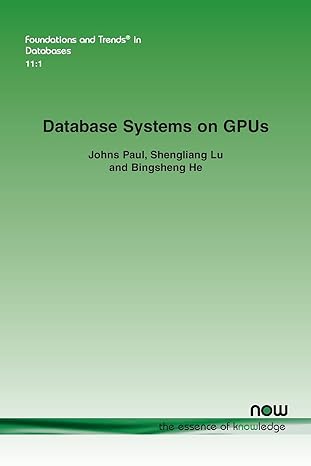Question
Operating Systems According to Wikipedia, edge computing pushes applications, data and computing power (services) away from centralized points to the logical extremes of a network.
Operating Systems
According to Wikipedia, edge computing pushes applications, data and computing power (services) away from centralized points to the logical extremes of a network. As a technological paradigm, edge computing is also referred as mesh computing, peer-to-peer computing, autonomic (self-healing) computing, grid computing, and by other names implying non-centralized, nodeless availability. Your supervisor decides that your first project will be to make a little change to a standard Unix filesystem (textbook solution) -- - to fit in edge computing scenario. More specifically, you are asked to change the current centralized architecture (single i-node) of the file system to a distributed version (multiple i-nodes).
(a) Discuss the challenges behind the project.
(b) Discuss the range of options available to you as a system designer in implementing such a system. Discuss the pros and cons of each of these options from the point of view of performance.
Step by Step Solution
There are 3 Steps involved in it
Step: 1

Get Instant Access to Expert-Tailored Solutions
See step-by-step solutions with expert insights and AI powered tools for academic success
Step: 2

Step: 3

Ace Your Homework with AI
Get the answers you need in no time with our AI-driven, step-by-step assistance
Get Started


